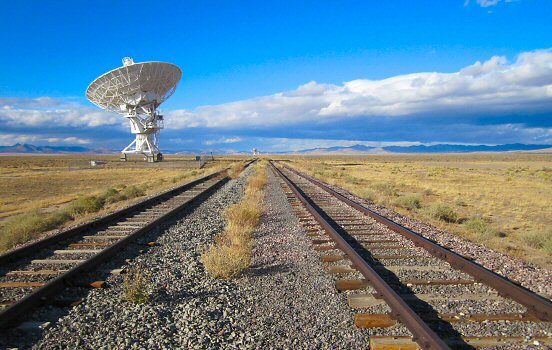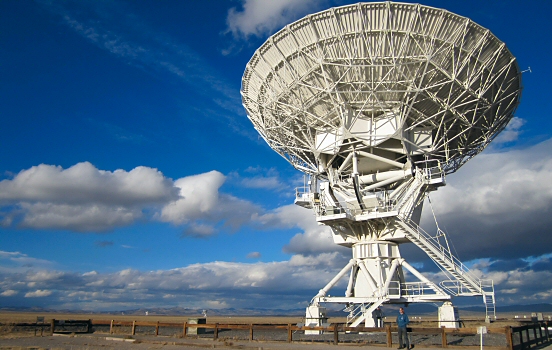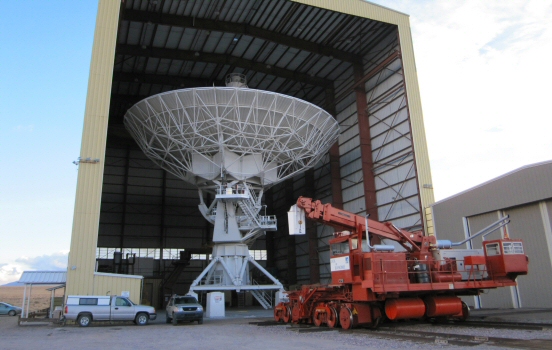There’s something unsettling about the emptiness of the deserts in New Mexico. A silence so complete it feels like the universe itself is holding its breath. Out here, under the endless sky, far from the nearest espresso or cell tower, humanity feels small. A perfect place for observing the universe.
As I drive across the flat plains of San Agustin, I can see for miles in every direction. But suddenly the antennas of Very Large Array starts to appear one by one.
The Very Large Array, or VLA for short, is a radio observatory with 27 antennas. These 25-meter dishes are moved around using rail tracks, which at one point even crosses Route 60.
 1 of 27 antennas at Very Large Array observatory.
1 of 27 antennas at Very Large Array observatory.
Unfortunately that iconic scene is quite bogus. Radio astronomers don’t really listen to cosmic signals with audio headphones, the antennas were aligned to get a better visual shot and even the number of dishes were increased by CGI effects. But the control room, even though shot on a set, is a near perfect replica of the actual VLA Control Room.
The VLA site can also be seen in Carl Sagan’s 1980 documentary “Cosmos” and several movies such as “2010”, “The Arrival”, “Independence Day” and “Terminator Salvation”.
 Taking a closer look.
Taking a closer look.
But VLA isn’t science fiction. This is where we eavesdrop on the cosmos. Hunting echoes from the birth of stars. Listening for whispers from the beginning of everything. While the rest of us scroll through Instagram photos, these dishes are tuned to the hum of eternity. Out here, you don’t just feel alone, you feel insignificant.
Maybe we don’t find aliens. Maybe the signals are just noise. But the search? That’s the poetry. That’s the madness that makes us human. In the stillness of the desert, with the sun sinking low and the dishes pointed skyward, we’re all just trying to make sense of the silence.
 Antenna Assembly Building.
Antenna Assembly Building.
As astronauts were working on the ISS yesterday, they were 400 kilometers above the surface. That’s even less than the distance from Gothenburg to Stockholm, and yet they feel so very far away. The biosphere of Earth is incredibly thin from that point of view. Everyone that has ever lived, everyone you’ve ever read about in history books, they all lived and died on this little sphere. It’s all we got, and we are destroying it.
Nobody said it better than the late Carl Sagan:
“Like it or not, for the moment the Earth is where we make our stand. It has been said that astronomy is a humbling and character building experience. There is perhaps no better demonstration of the folly of human conceits than this distant image of our tiny world. To me, it underscores our responsibility to deal more kindly with one another, and to preserve and cherish the pale blue dot, the only home we’ve ever known.”
— Carl Sagan, Pale Blue Dot (1994)

Comments
No comments yet.
Leave a reply